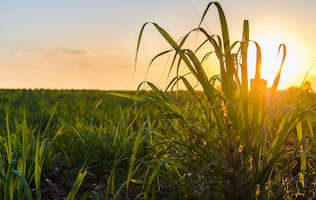
- Cane crush advances in the first half of July, registering 46 million tons of cane.
- Sugar content also improved significantly.
- However, sugar production remains lower than the previous crop by 2.66 million ton
1H July 2022 Production Numbers
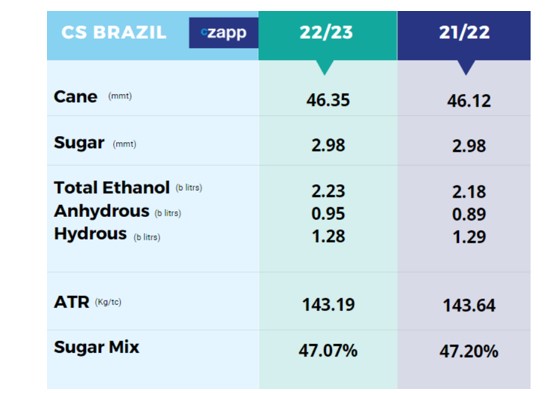
Within Expectation
- 46.35 mmt of sugarcane were processed in 1H July – the first fortnight in which the crushing rate reached the same level as in the previous crop.
- From the last fortnight to now, it has been a growth of 4 mmt in the volume of cane crushed.

- But the cumulative crushing volume is still lower than in 2021/22 with 25 mmt less cane.
- With the increase in the crushing pace and the hope of a stronger agricultural productivity (TCH) in the next fortnights, it is expected that this difference to the previous crop could end at the end of October.
- As a result, for now we project that 545.5 mmt of cane could be crushed in the region this crop.
Sugar Content at better levels
- The low volume of rainfall in recent months helped to strengthen the sugar content (ATR) this fortnight.
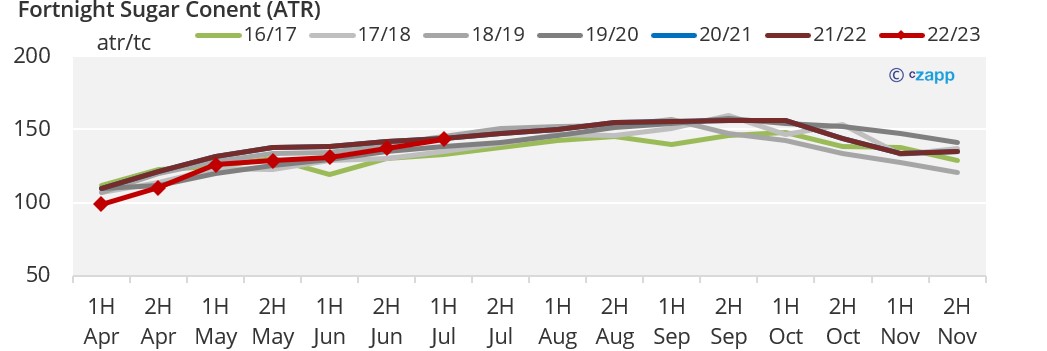
- The sugarcane quality was better than expected with the ATR at 143.19 atr/tc.
- Growth of 6 atr/tc since the end of June.
- It is expected amid the dry period that the ATR will get even stronger in the coming days.
Sugar mix rising
- Despite the fact that this crop started more alcohol oriented, today the production mix of the mills in general is more sugar oriented.
- In this fortnight, the sugar mix reached 47.1% – a level similar to the same period last year, which was considered a max sugar year.
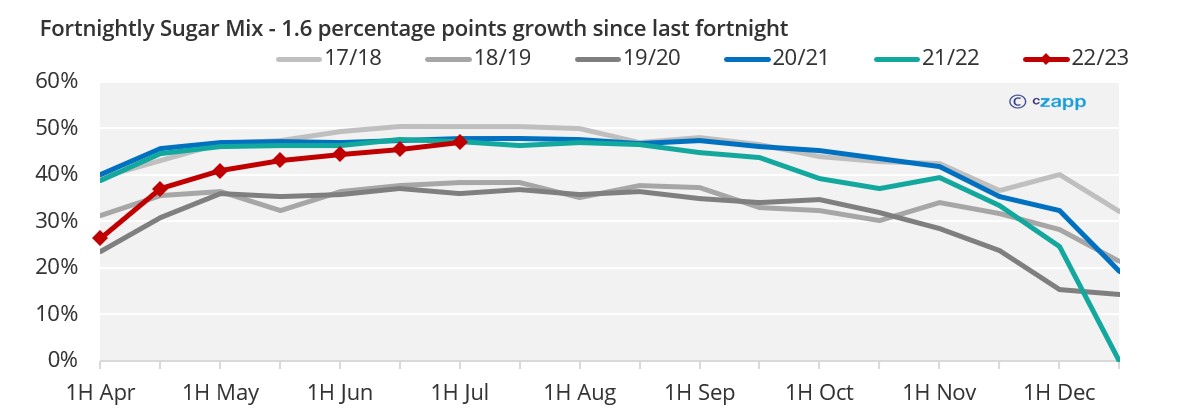
- With a stronger sugar mix, the volume of sugar produced in the fortnight reached 2.98 mmt
- As a result, CS has already produced 12.66 million tons of sugar since the beginning of the harvest – it still 17.4% lower than in 2021/22.
- Our expectation for now is that sugar production could reach 32 million tons this crop.
Recovery in Ethanol sales
- Hydrous sales grew in the first fortnight of July:
- 735 million liters of ethanol were sold – 0.8% more than in 1H July 2021
- This move was expected given that the parity at the pumps was below 70%.
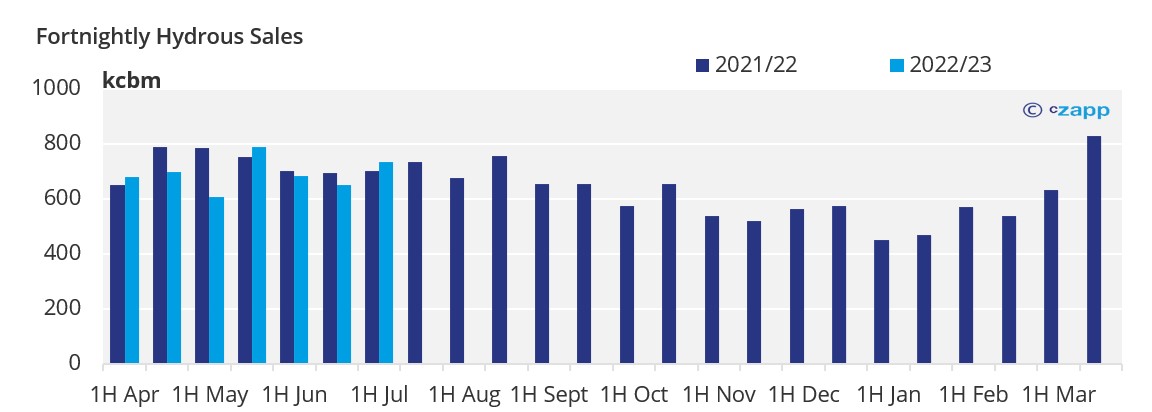
- Today, however, the story is different with parity at the pumps at 70.1% favoring gasoline consumption

Explainers that you might like
